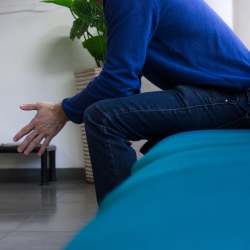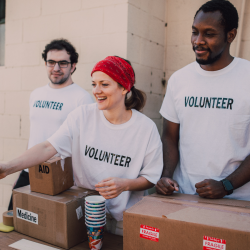2 million Canadians are “traumatically stressed.” What do their employers do now?
A world ago, back in May, Health Canada estimated that 11 million Canadians were already experiencing “high levels of stress,” while 2 million were experiencing “traumatic stress.”
Given Premier Doug Ford’s admission yesterday that we are officially in the second wave of COVID-19, it’s easy to skim over just how bad traumatic stress is. It’s the result of how we react to shocking and overwhelming situations and can bring on all kinds of mental illnesses.
Suppose the number of employees applying for stress leave or looking for mental health services indicates a rising crisis in stress. In that case, employers need to treat mental illness as seriously as they do physical condition. Especially now, as we head into winter, as federal benefits shrink or disappear, and as kids head to school.
The numbers are stark: 68% of HR professionals report more employees seeking help for their mental health challenges. Mental health has sparked a 69% rise in employee absenteeism and a 61% rise in disability claims. These are huge increases in a short time.
Companies reacted by raising mental health support benefits. Manulife increased its employee benefit to $10,000 per person a year. In addition, two-thirds of employers now offer health-care spending accounts, or HCSAs, to their employees. This progress is encouraging.
Investing in technologies like telehealth or virtual therapy and counselling, as well as fitness and wellness apps to prevent illness before it starts….well, these are all highly laudable and overdue.
But do they work?
It appears not, at least not yet. And if ever Canadians are screaming for help to ease their traumatic stress, it’s now. It seems that well over half (57%) of employees don’t use their Health Care Spending Accounts at all, and those who did only used 50% of the funds available.
This lack of use is especially shocking since these accounts are set up purely to help the employee get better or feel better. It’s free money, for Heaven’s sakes, and still, most people who have these funds don’t collect them. An even lower usage rate happens with apps, the kind of “do-it-yourself” client empowerment initiatives that many companies have created for their employees to use to monitor and improve their own physical and mental health. How low? 10 per cent.
Low engagement isn’t because the apps are poorly designed, or the programs are clunky. It’s because treating mental issues is different from treating physical matters.
We don’t have a ‘fracture crisis’ in Canada where doctors are frantically trying to diagnose a rising spate of fractures, with their patients enduring huge (and agonizing) waits in fracture clinics to be treated for their broken arms.
We have a mental health crisis because mental illness is often so much harder to diagnose and is almost always harder and much longer to treat.
And this was our reality before the pandemic hit. This was before more than 2 million of us were experiencing “traumatic stress.”
When you break your arm, you (or a loved one) go to the ER. Odds are, you know, you broke your arm, and you know how and why. You also understand that the pain, while intense now, will go away soon.
But if you break your spirit, that is to say; if you are feeling depressed or anxious or frustrated or angry, odds are you may not know it; you may not know what’s wrong or even if anything’s wrong; you may not know where to get help – no matter how cool your shiny new app is. This is why 56% of us living with major depression, 57% with an anxiety disorder and 78% with alcohol dependence never receive treatment of any kind for our conditions.
All to say that since mental illnesses virtually prohibit self-care, what’s needed to make these patient empowerment technologies and healthcare services work is patient navigators. In other words, professionals who can help guide the employee through their crisis and use their mental health technologies and healthcare services wisely.






